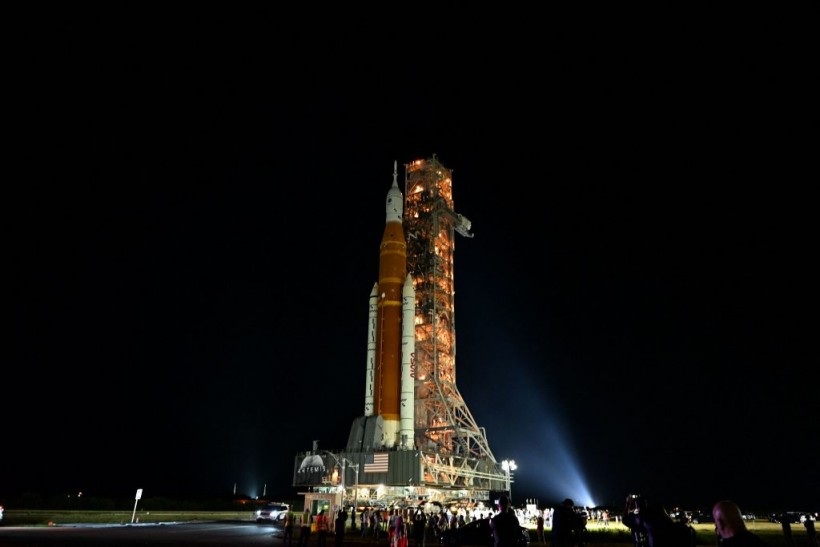The Space Launch System (SLS) rocket's launch for NASA's Artemis 1 mission, which will send the Orion spacecraft to the Moon, has been scheduled for the future.
The space agency created the revised schedule after placing a $1.99 billion contract for three additional Orion spacecraft to transport men on its Artemis VI-VIII Moon missions.
NASA Artemis to Launch in November
The space agency (per Tweak Town) has also sought backup launch possibilities for Wednesday, Nov. 16, and Saturday, Nov. 19, both of which are two-hour launch windows. NASA has set a new launch window that lasts 69 minutes on Nov. 14.
In addition, The Hill said NASA intends to bring the SLS back onto the Kennedy Space Center launch pad on Nov. 4 following routine maintenance and minor damage repairs.
However, the launch of Artemis 1 has had to be postponed a few times; the first attempt was delayed due to a fuel leak that has now been corrected, and the second was delayed due to Hurricane Ian making landfall in Florida.

Artemis 1, an uncrewed test flight, will feature the first blastoff of the massive Space Launch System (SLS) rocket, which will be the most powerful in the world when it goes into operation. It will propel the Orion crew capsule into orbit around the Moon. The spacecraft will remain in space for 42 days before returning to Earth.
Space Agency Orders Three New Orion Capsules
Meanwhile, Space.com said NASA had given aerospace behemoth Lockheed Martin permission to build three additional Orion crew capsules in a $1.99 billion contract.
The Artemis moon program of NASA, especially Artemis missions six through eight, will use the spacecraft.
"Lockheed Martin is honored to partner with NASA to deliver Orion spacecraft for NASA's Artemis missions," Lisa Callahan, vice president and general manager for commercial and civil space at Lockheed Martin said in a statement.
"This order includes spacecraft, mission planning, and support and takes us into the 2030s," added Callahan.
Express added that the modules could house six crew for 21 days beyond low-Earth orbit. EFT-1, the first completed capsule, underwent an uncrewed test flight in December 2014.
Currently, the second is mounted on the Artemis I rocket, which will launch on its historic mission next month. The new orders are intended for the Artemis VI-VIII missions, which are scheduled to launch between 2028 and 2030.
According to Lockheed Martin, the most recent NASA procurement is the second batch of three missions ordered as part of the space agency's "Orion Production and Operations Contract" (OPOC).
About Artemis Mission
The Artemis Generation, consisting of several missions that will send people back to the Moon for the first time in 50 years, will officially begin with the launch of Artemis 1.
The primary purpose of the Artemis 1 mission, which will cover over half a million kilometers and serve as the starting point for subsequent Artemis missions, will be to conduct a lunar reconnaissance mission. To assure the safety of astronauts once they board, Artemis 1 will launch the Orion spacecraft further than any spacecraft has ever traveled while testing every technology that will be employed in subsequent Artemis missions.
NASA intends to fine-tune roughly the same voyage with Artemis 2, but this time with a crew, using presumably collected data from a successful Artemis 1. The Orion crew will spend 21 days aboard Artemis 2, the first crewed spacecraft to depart from low Earth orbit since Apollo 17 in 1972.
The major one, Artemis 3, will consider all the information acquired from conducting Artemis 1 and Artemis 2. The Orion spacecraft, which is expected to launch sometime in 2025, will land astronauts on the lunar surface. Many of the potential landing sites chosen by NASA are in the south polar regions of the Moon.
RELATED ARTICLE: NASA Pushes Through With Its Artemis I Launch Next Week; Agency Says It's Not Risking Its $4.1-Billion Rocket to the Moon
Check out more news and information on Space in Science Times.














